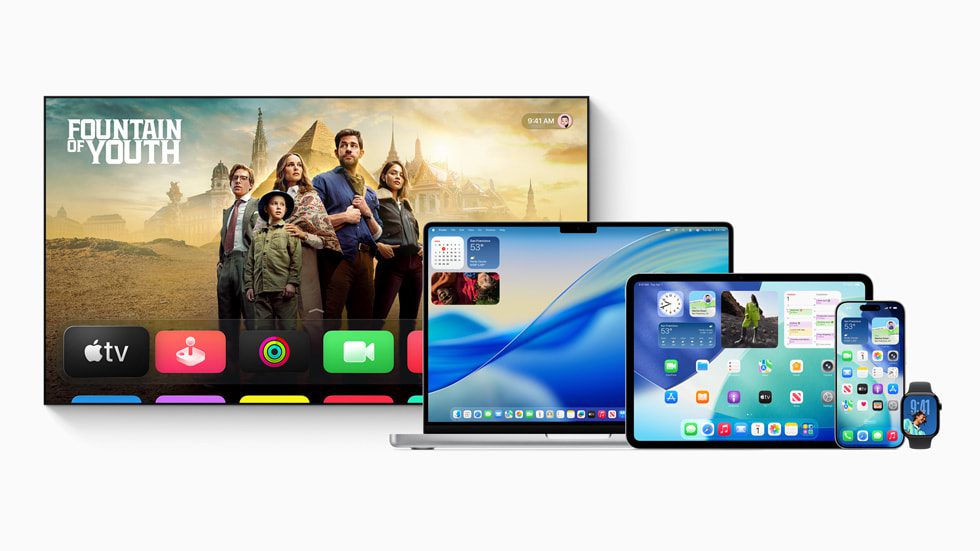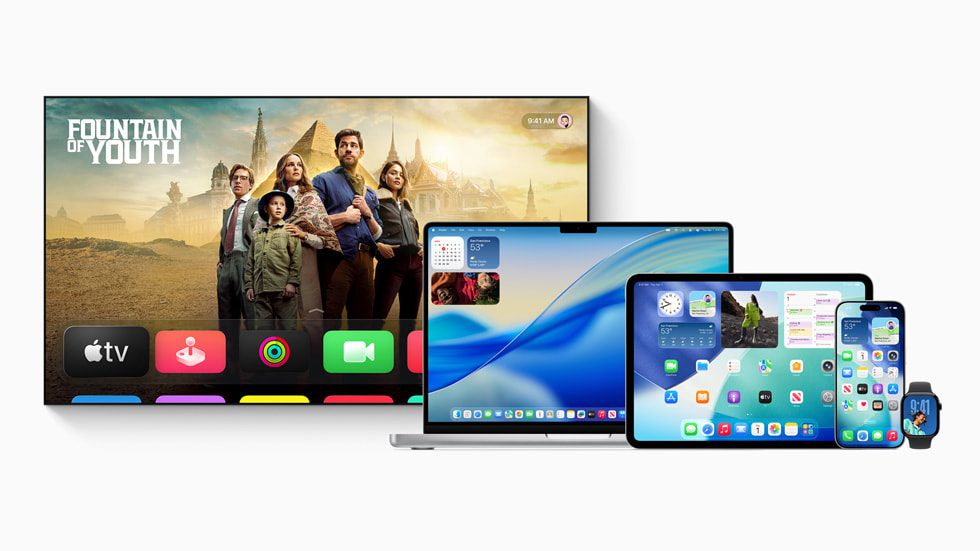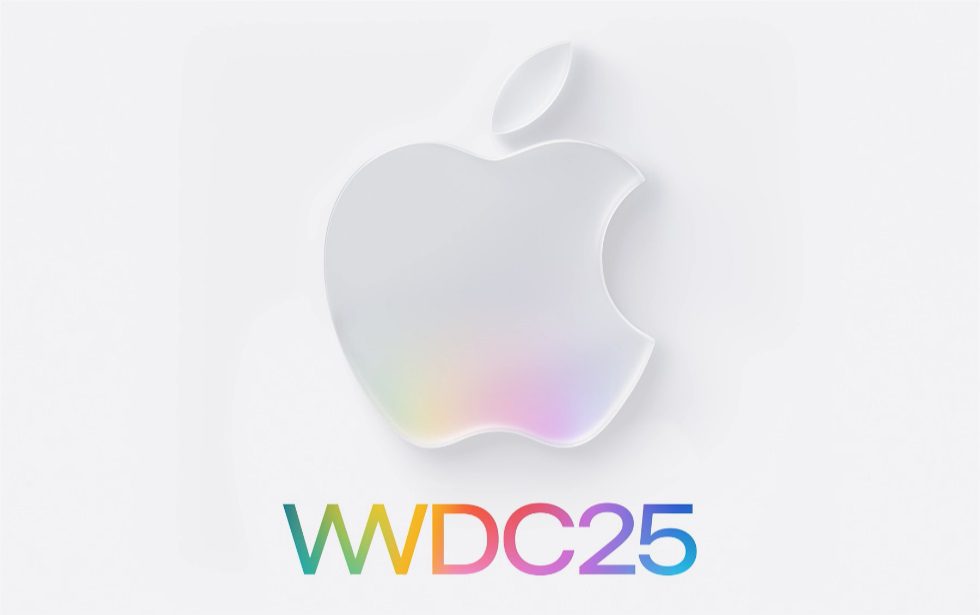
Apple Unveils Liquid Glass UI at WWDC 2025, marking a transformative moment for its ecosystem. This groundbreaking design language, introduced across iOS 26, iPadOS 26, macOS Tahoe 26, watchOS 26, tvOS 26, and visionOS 4, brings a glossy, translucent aesthetic inspired by the Vision Pro’s interface. Described as Apple’s most significant visual overhaul since iOS 7 in 2013, Liquid Glass introduces dynamic, glass-like elements that adapt to user interactions and content, creating a cohesive and immersive experience across all Apple devices. With a rollout planned from fall 2025 through fall 2026, this redesign redefines how users interact with their iPhones, iPads, Macs, Apple Watches, Apple TVs, and Vision Pro headsets. In this article, we’ll dive into the details of this stunning update, exploring its features, impact, and what it means for Apple’s future.
Key Takeaways
- Apple introduced the Liquid Glass UI at WWDC 2025, a major redesign for iOS 26, iPadOS 26, macOS Tahoe 26, watchOS 26, tvOS 26, and visionOS 4.
- The design features translucent, reflective elements inspired by visionOS, marking the biggest UI overhaul since iOS 7.
- Liquid Glass enhances user interaction with dynamic animations, rounded corners, and adaptive controls.
- The update will roll out across Apple’s ecosystem from fall 2025 to fall 2026.
- Developers can leverage new APIs to integrate Liquid Glass into their apps, ensuring a unified experience.
What Is the Liquid Glass UI?
Contents
- 1 A New Design Language for Apple’s Ecosystem
- 2 The Inspiration Behind Liquid Glass
- 3 Translucent and Reflective Aesthetics
- 4 Dynamic and Adaptive Controls
- 5 Unified Design Across Platforms
- 6 Enhanced Customization Options
- 7 A More Intuitive Interface
- 8 Improved Navigation and Clarity
- 9 Integration with Apple Intelligence
- 10 New APIs for Developers
- 11 App-Specific Updates
- 12 From Skeuomorphism to Flat Design to Liquid Glass
- 13 A Vision for the Future
- 14 Timeline for Release
- 15 Device Compatibility
- 16 Initial Impressions
- 17 Industry Context
A New Design Language for Apple’s Ecosystem
At WWDC 2025, Apple introduced Liquid Glass, a design language that reimagines the user interface across its operating systems. Unlike previous updates that focused on incremental changes, Liquid Glass is a bold step forward, inspired by the spatial computing aesthetics of visionOS. This translucent, glass-like material reflects and refracts its surroundings, adapting dynamically to user interactions and content. According to Alan Dye, Apple’s vice president of Human Interface Design, Liquid Glass combines “the optical qualities of glass with a fluidity only Apple can achieve,” creating a lively and intuitive experience.
The Inspiration Behind Liquid Glass
The Liquid Glass UI draws heavily from the Vision Pro’s visionOS, which introduced a three-dimensional, immersive interface. Apple has taken this concept and adapted it for 2D screens, creating a sense of depth and dynamism. The design leverages Apple’s advancements in hardware, silicon, and graphics technologies to enable real-time rendering and specular highlights. This results in a interface that feels alive, with elements that move, expand, and contract based on user input and environmental context.
Key Features of the Liquid Glass UI
Translucent and Reflective Aesthetics
The hallmark of Liquid Glass is its translucent, glass-like appearance. App icons, widgets, and controls now feature a glossy, reflective quality that mimics real-world glass. For example, on the iPhone’s Lock Screen, the time numerals adapt their weight and size to complement the wallpaper, creating a harmonious blend of design and content. This translucency extends to macOS Tahoe 26, where the Dock and Menu Bar can adopt a fully transparent or “Clear” look, making the display feel larger and more immersive.
Dynamic and Adaptive Controls
Liquid Glass introduces dynamic controls that morph based on user needs. Tab bars and sidebars in apps like Safari and Apple Music shrink or expand to prioritize content, ensuring navigation remains accessible without cluttering the screen. For instance, when scrolling in iOS 26, the tab bar shrinks to focus on the content, re-expanding when needed. These fluid animations make interactions feel seamless and intuitive, enhancing the overall user experience.
Unified Design Across Platforms
One of the most significant aspects of Liquid Glass is its cross-platform consistency. Unlike previous updates that varied slightly between devices, Liquid Glass unifies the design language across iOS 26, iPadOS 26, macOS Tahoe 26, watchOS 26, tvOS 26, and visionOS 4. This ensures a harmonious experience when switching between an iPhone, iPad, Mac, Apple Watch, Apple TV, or Vision Pro. The rounded corners of UI elements align with Apple’s modern hardware designs, creating a cohesive aesthetic.
Enhanced Customization Options
Liquid Glass introduces new customization options, particularly for the iPhone’s Home Screen and macOS’s Dock. Users can now choose from Light, Dark, Tinted, or Clear modes, with the Clear mode emphasizing the glassy aesthetic. App icons feature multiple layers of Liquid Glass, adding depth and vibrancy. On the iPad, users can resize windows and use a “tiling” layout to flick windows to the screen’s edges, making multitasking more intuitive.
How Liquid Glass Enhances User Experience
A More Intuitive Interface
The Liquid Glass UI is designed to make interactions more intuitive. By leveraging real-time rendering, UI elements respond to user touch and movement with fluid animations. For example, dragging a Liquid Glass window causes it to “jiggle” and move with your finger, creating a tactile, engaging experience. This responsiveness extends to system elements like the Control Center and Notifications, which now feature rounded, glassy designs that adapt to the screen’s curvature.
Apple has redesigned navigation elements to prioritize clarity. Controls, toolbars, and tab bars are crafted from Liquid Glass, floating above apps to keep content front and center. This approach reduces visual clutter and makes it easier for users to find the controls they need. In apps like Safari, the floating tab bar shrinks when scrolling, ensuring the webpage remains the focus. These changes make navigation more seamless and visually appealing.
Integration with Apple Intelligence
Liquid Glass complements Apple’s ongoing advancements in Apple Intelligence. Features like Live Translation in the Phone, Messages, and FaceTime apps use the translucent UI to display real-time text and audio translations. Visual Intelligence allows users to search for objects on their screen, with Liquid Glass elements highlighting relevant information. These AI-driven features blend seamlessly with the new design, enhancing functionality without overwhelming the user.
Impact on Developers and Apps
New APIs for Developers
Apple has introduced new APIs for SwiftUI, UIKit, and AppKit, allowing developers to integrate Liquid Glass into their apps. This ensures third-party apps can adopt the same translucent, dynamic aesthetic as system apps, creating a consistent experience across the ecosystem. Developers can use these APIs to design controls, tab bars, and widgets that align with the Liquid Glass aesthetic, enhancing app functionality and visual appeal.
App-Specific Updates
Several core Apple apps have been revamped with Liquid Glass. The Camera app in iOS 26 features a minimalist design with just two controls—Video or Camera—accessible by swiping. The Photos app has been redesigned to address user complaints about iOS 18’s cluttered interface, with a Liquid Glass menu at the bottom for easier navigation. Apple Music introduces Lyrics Translation and AutoMix, with glassy player controls that animate in sync with the music. These updates showcase how Liquid Glass enhances both aesthetics and functionality.
The Evolution of Apple’s Design Philosophy
From Skeuomorphism to Flat Design to Liquid Glass
Apple’s design journey has been marked by significant shifts. The skeuomorphic designs of early iOS versions mimicked real-world objects, like the Notes app resembling a legal pad. In 2013, iOS 7 introduced a flat, minimalist design under Jony Ive’s leadership, moving away from skeuomorphism. Liquid Glass builds on this legacy, blending the glossy, layered aesthetics of iOS 7 with the depth and dynamism of visionOS. This evolution reflects Apple’s commitment to balancing familiarity with innovation.
A Vision for the Future
Some speculate that Liquid Glass hints at Apple’s broader vision for augmented reality (AR) and artificial intelligence (AI). The translucent, three-dimensional aesthetic aligns with potential AR glasses or other spatial computing devices. By unifying the design across its ecosystem, Apple may be laying the groundwork for a future where its devices seamlessly integrate with AR and AI technologies, creating a cohesive user experience across physical and digital spaces.
Rollout and Availability
Timeline for Release
Apple plans to roll out Liquid Glass across its operating systems starting in fall 2025, with full adoption expected by fall 2026. A developer beta of iOS 26, iPadOS 26, macOS Tahoe 26, watchOS 26, and tvOS 26 is available as of June 2025, with a public beta following in July. The final versions will be free updates for compatible devices, including iPhone 11 and later, iPads with M1 chips or later, and Macs with M1 or newer.
Device Compatibility
Liquid Glass is designed to take advantage of Apple’s powerful hardware. While most features will be available on devices like the iPhone 11 and later, some Apple Intelligence features integrated with Liquid Glass, such as Visual Intelligence, require an iPhone 15 Pro, iPhone 16 models, or M1-based iPads and Macs. This ensures the dynamic animations and real-time rendering perform smoothly across the ecosystem.
User Reactions and Industry Impact
Initial Impressions
Posts on X reflect mixed sentiment about Liquid Glass. Some users praise its fresh, modern look, with one calling it “a joyful, intuitive design” that makes iOS feel alive. Others are skeptical, comparing it to the heavy transparency of iOS 7, which was later toned down due to usability issues. TechCrunch noted that while Liquid Glass is visually striking, its success will depend on whether it improves usability or merely serves as a cosmetic update.
Industry Context
Apple’s Liquid Glass comes at a time when competitors like Google and Samsung are pushing AI-driven features. While Apple has introduced AI enhancements like Live Translation and Visual Intelligence, some analysts argue that Liquid Glass is a way to distract from Apple’s slower progress in AI compared to rivals. However, the unified design language strengthens Apple’s ecosystem, potentially giving it an edge in user retention and brand loyalty.
Summary
Apple’s Liquid Glass UI, unveiled at WWDC 2025, is a bold reimagining of its operating systems, bringing a translucent, dynamic aesthetic to iOS 26, iPadOS 26, macOS Tahoe 26, watchOS 26, tvOS 26, and visionOS 4. Inspired by visionOS, this design language introduces glossy, reflective elements that adapt to user interactions, creating a cohesive and immersive experience across Apple’s ecosystem. With features like dynamic controls, enhanced customization, and new APIs for developers, Liquid Glass promises to make interactions more intuitive and visually appealing. Set to roll out from fall 2025 to fall 2026, this overhaul marks Apple’s biggest UI update since iOS 7, signaling a new era for its design philosophy. While user reactions are mixed, Liquid Glass positions Apple to stay competitive in a rapidly evolving tech landscape.
FAQs About Apple’s Liquid Glass UI
- What is the Liquid Glass UI?
The Liquid Glass UI is Apple’s new design language introduced at WWDC 2025, featuring translucent, reflective elements across iOS 26, iPadOS 26, macOS Tahoe 26, watchOS 26, tvOS 26, and visionOS 4. It creates a glossy, glass-like aesthetic that adapts to user interactions. - Which devices support the Liquid Glass UI?
Liquid Glass will be available on iPhone 11 and later, iPads with M1 chips or newer, Macs with M1 or later, Apple Watches, Apple TVs, and Vision Pro headsets. Some AI features require iPhone 15 Pro or iPhone 16 models. - When will Liquid Glass be available?
A developer beta is available as of June 2025, with a public beta in July 2025. The final versions will roll out from fall 2025 to fall 2026 as free updates. - How does Liquid Glass differ from previous iOS designs?
Unlike the skeuomorphic designs of early iOS or the flat design of iOS 7, Liquid Glass introduces a translucent, dynamic aesthetic inspired by visionOS, with adaptive controls and real-time rendering. - Can developers use Liquid Glass in their apps?
Yes, Apple provides new APIs for SwiftUI, UIKit, and AppKit, allowing developers to integrate Liquid Glass elements like translucent controls and widgets into their apps. - What are the customization options with Liquid Glass?
Users can choose Light, Dark, Tinted, or Clear modes for app icons and system elements. The Clear mode emphasizes the glassy aesthetic, particularly on the iPhone Home Screen and macOS Dock. - How does Liquid Glass integrate with Apple Intelligence?
Liquid Glass complements AI features like Live Translation and Visual Intelligence, using translucent elements to display real-time translations and highlight searchable objects on the screen. - Is Liquid Glass inspired by visionOS?
Yes, Liquid Glass draws inspiration from the Vision Pro’s visionOS, incorporating a three-dimensional, translucent aesthetic adapted for 2D screens across Apple’s ecosystem. - Will Liquid Glass improve usability?
Apple claims Liquid Glass enhances usability with intuitive controls and clear navigation. However, some users are skeptical, citing past issues with heavy transparency in iOS 7. - Why did Apple rename iOS to iOS 26?
Apple adopted a year-based naming convention to align with the year most users will run the software (2026), creating symmetry across iOS 26, macOS Tahoe 26, watchOS 26, and others.



